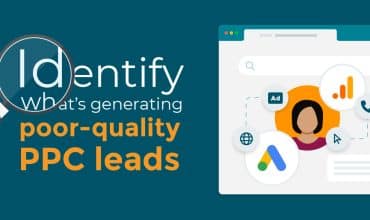Why self-referrals in analytics are bad for business
Have you ever eagerly checked the source of a lead or visitor only to find it’s being reported as a self-referral? So frustrating.
Self-referrals in analytics can be a major issue for businesses: It skews attribution data, making it difficult for marketers to measure the effectiveness of their marketing strategies and channels accurately. It also makes it a challenge to decide where to allocate budget and resources. We know that this can be a real headache for marketers.
Now, with our Smart Attribution Link, you can say goodbye to self-referrals and hello to 100% marketing attribution.
What is a self-referral?
A self-referral is when your website domain is listed as the source of referral traffic. It is usually an indicator of a wider analytics problem – such as your analytics code not being implemented correctly, or your website loading slowly. It can also be caused by something as simple as a visitor opening a link on your website in a new tab/window, or going idle for a while (with your website open in the background) and coming back again.
Why are self-referrals bad for business?
Self-referrals are a problem for marketers because they can:
- Distort your acquisition data
- Artificially inflate sessions
- Affect conversions by misattributing lead sources, and
- Alter behaviour data as you can’t see the full journey of a visitor.
For example, look at the user journey below.
A new visitor finds your website through one of your Google Ads. They visit a few pages on your website, but midway through their journey they go idle – they still have your website open in their browser but they’re not actively looking at it. After a few hours, the visitor returns and continues with their journey. They visit two more pages before completing a contact form.
In Google Analytics, this single journey would be split into two sessions: the first being when they visited your website from Google Ads, and the second when they came back to your site after going idle. When the visitor returns and the new session starts, the page they returned to is reported as the landing page – receiving all the attribution credit for the conversion. However, the first part of their journey along with their original lead source is not included in the conversion path. In the above example, your PPC campaign doesn’t receive credit for the lead it generated.
How does Mediahawk stop self-referrals?
We understand the importance of stopping self-referrals and ensuring data is attributed correctly. That’s why we’ve developed Smart Attribution Link – a unique algorithm that uses intelligent behavioural signals to attribute your visitors to their correct source.
Using the same example as above, with our Smart Attribution Link, you can see how the same user’s journey is represented in Mediahawk; accurately giving credit to the original lead source and giving you complete visibility on the user’s journey.
100% attribution, 100% of the time
Self-referrals are a common issue for marketers, and it’s important to be aware of their implications. That’s why it’s essential to trust a solution that provides accurate marketing attribution data – giving you a clear view of how customers actually find your business, and how effective your marketing efforts really are.
Our call tracking and marketing analytics software is a powerful tool that helps businesses grow their revenue, reduce wasted spend, and improve customer experience. We’re committed to providing 100% attribution, 100% of the time, giving our clients confidence in the data we provide so they can make accurate, data-backed decisions.
Subscribe to Mediahawk
"*" indicates required fields

Get complete clarity on your lead generating channels. Book a call with us and find out how you can get much more accurate attribution.





